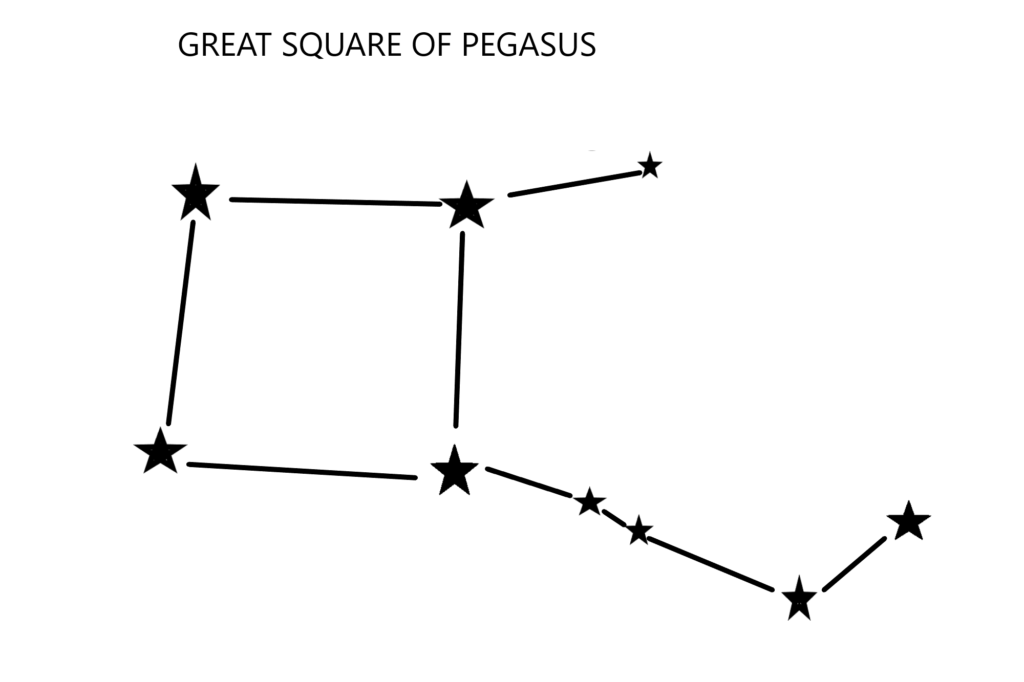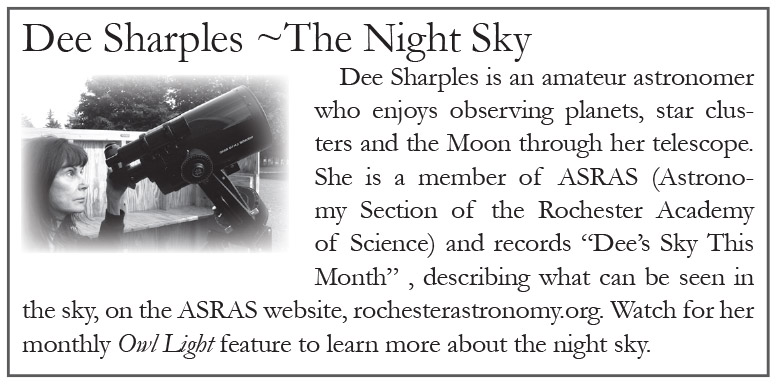The Night Sky – December 2019
by Dee Sharples –
Clear Sky Views and Winter Solstice
Darkness comes very early in December with short, often cloudy days, and cold weather. But the good news is that with less humidity in the atmosphere than in the summer, the clear night skies appear crystal clear. The colder air of winter cannot hold as much moisture as the warm air of summer. It’s this moisture which interferes with the transparency of the summer night skies.
I always look forward to the winter solstice which arrives at 11:19 p.m. on December 21st. This is the moment the Earth, in its yearly trek around the sun, arrives at the point where our North Pole is tipped furthest away from the sun.
Picture a long pole going straight through the Earth from the North Pole to the South Pole. This pole isn’t straight up and down but is tilted by 23.5 degrees. This represents the axis on which the Earth turns giving us day and night.
As Earth orbits the sun, the tilt of its axis always points in the same direction which means that as the days pass, different hemispheres of Earth will get the sun’s direct rays.
When the Northern Hemisphere is tipped away from the sun, the sun is lower in our winter daytime sky and its rays are indirectly focused on us. Instead they’re focused more directly on the Southern Hemisphere which experiences its summer. After the winter solstice, the Earth continues its journey around the sun and the Northern Hemisphere slowly begins to tilt once again toward the sun, eventually bringing us the warmer temperatures of spring.
Many people believe that Earth is closer to the sun in the summer and farther away in the winter and that’s what causes our seasons. In fact, it’s exactly the opposite! Distance from the sun has no influence on our seasons – it’s all caused by the Earth’s tilt.

On one of the crystal clear December nights we can anticipate, look for the Great Square of Pegasus halfway up from the southern horizon around 9:00 PM at the beginning of the month, 8:00 PM in the middle of the month, and 7:00 PM near the end. In Greek mythology, Pegasus was a divine winged white horse and the stars in this constellation depict him soaring across the sky . . . up-side-down. A more modern description is that the constellation resembles a baseball diamond. It’s easily recognized in the December sky and fun to point out to other people.
